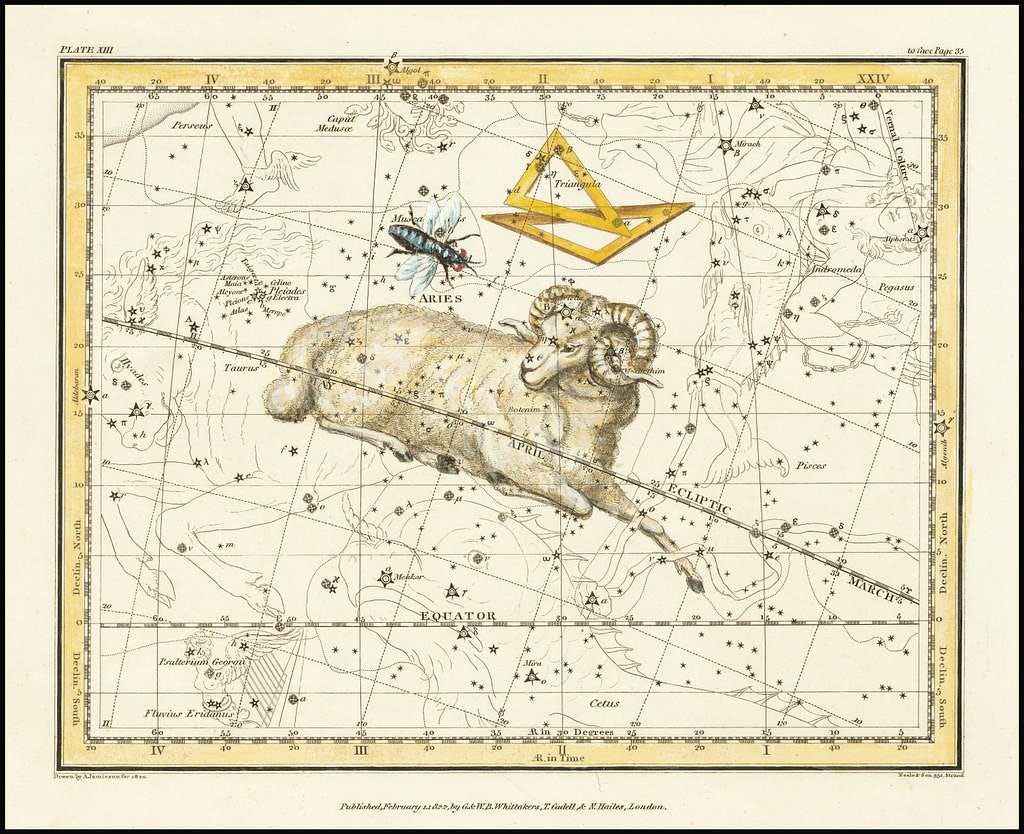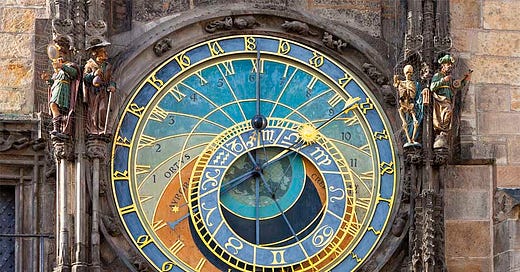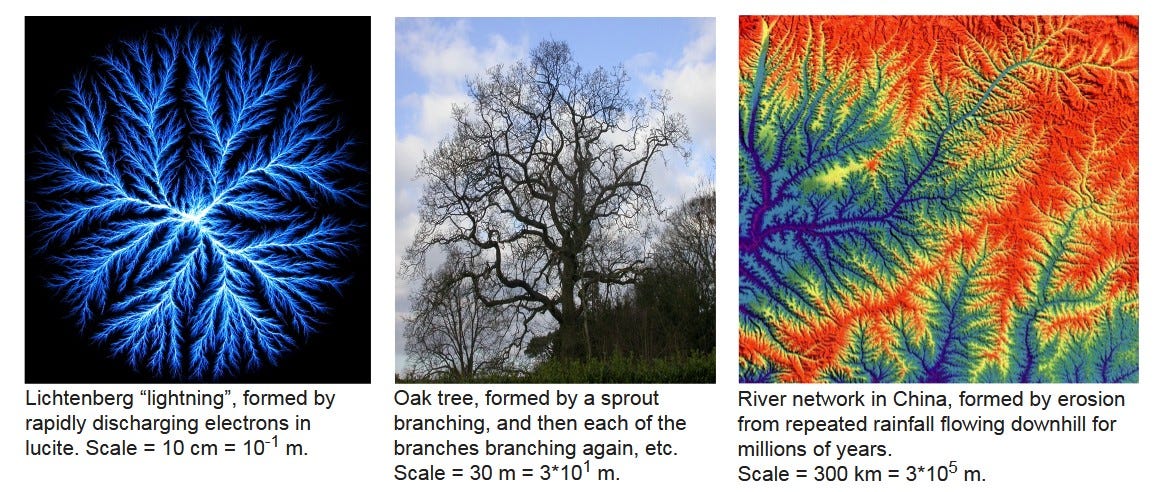Whether you swear by them or scoff at them, you undoubtedly have heard about the astrological signs of the zodiac. However, are you aware that each “sign” is a constellation of stars prominent in our nightly skies? And that the astrology system most widely used in western cultures is based on the four major seasons? Astrology and astronomy were once synonymous and used for keeping time before modern calendars and hourly clocks. Astrology signs make more sense when they are reconnected to their constellations and our natural world.
The astrological year begins at the spring equinox
In Western Tropical astrology, the new year starts at the spring equinox.1 The spring/fall equinoxes and summer/winter solstices mark the start of the four major seasons in a calendar year (one Earth orbit around our sun). Each major season lasts about three months, lining up with the next equinox or solstice. For example, spring in the northern hemisphere starts at the spring equinox (mid-March) and ends at the summer solstice (mid-June).2
Constellations demark the Earth’s orbit around the Sun
The constellations’ appearance and location in the sky change with the Earth’s orbit and correspond to different times of the year. As noted in the moon phases post, modern astronomers (still) use the ecliptic, or “the apparent path of the Sun across the celestial sphere over the course of the year”, as a celestial coordinate system for tracking objects in our solar system.
The zodiac is a band of stars that extends a few degrees above and below the ecliptic. This band contains 12 constellations (also known as “signs”) that further divide the year into 12 months.
The Aries constellation is the traditional herald of spring
From our position on Earth, the Sun appears to “travel” through the zodiac/band of stars over the course of one year, beginning with the Aries constellation at the spring equinox and ending with the Pisces constellation.3
While our current Gregorian calendar is a mishmash of Roman emperor names and varying month lengths that bear little correspondence to anything (ask me how I really feel about it), the astrological year is portrayed as a circle, or cycle. The circle is divided into twelve signs of 30 degrees each (12 x 30 = 360 degrees), with the sun “moving” one degree a day around the circle.4
Each constellation or astrological sign denotes a 30-day month and corresponds to the position of our sun in the sky. For example, Aries season is the first month of Spring, beginning on March 20 in 2025 and ending 30 days later on April 19.

Constellations mark the seasons within the seasons
In the astrological year, spring consists of three signs, or mini-seasons within the major season. The signs are named after the constellation from which they originated:
Aries season - mid-March/spring equinox to mid-April (early spring)
Taurus season - mid-April to mid-May (middle of spring5)
Gemini season - mid-May to mid-June/summer equinox (late spring)
What is observed in the first month of spring/Aries season (new buds on trees) differs from what occurs in the middle of spring/Taurus season (flowering trees) or at the end of spring/Gemini season (leafy trees). Tracking time by the constellations helped our ancestors understand and align with the world around them, which in turn, improved their chances of survival.
For example, spring was the time for planting. But being knowledgeable about more specific timing would have helped assure more successful planting. Hardier seeds/seedlings might be sowed in early spring (Aries season), whereas more tender plants needed to wait until after the last frost (Taurus, or even Gemini season, depending on the bioregion).
In addition to tracking the beginning, middle, and end of each major season between the equinoxes and solstices, astrological timekeeping further breaks down each season into three 10-day periods, or decans (similar to 7-day weeks or now-forgotten 2-week fortnights). In the Aries example, the first decan is from March 20-March 30, the second decan from March 31-April 9, and the third decan from April 9-April 19.

Even in just 10 days, change and movement can be seen in the natural world. In the more northern climes where I live, the ground is still frozen and snow is still falling in the first ten days of spring. In the second ten days, or early April, we often still receive snow but the ground is rapidly warming. By the end of the third decan, many more buds are on the trees and the frogs affectionately known as “peepers” have begun singing across the marshlands.
In ancient cultures, celestial and earthly events were intertwined
For ancient astronomers (in many cultures), the technical and symbolic meanings of the heavenly alignments were intertwined. They used their full knowledge of the sky - including countless years of observing star positions and patterns of Earth and human events - to predict and interpret the world around them.
The position of the stars in the sky gave clues, not because they caused events on Earth, but because the stars and events co-arose. The heavens and Earth were viewed as part of the same fractals, or never ending patterns that repeat at different scales.
A fractal is a picture that tells the story of the process that created it.
FractalFoundation.org
In western cultures, the Sun rose with the Aries constellation at the spring equinox. Therefore, both the spring and Aries seasons signified new beginnings and fresh starts. As discussed in this post, the spring equinox also symbolized both hope (abundance returning) and fear (can we make it before our supplies run out?). Although the natural world was awakening from its winter slumber, the weather could still be harsh and the temperatures cold. When stores were running low, braving the elements and returning with food could mean the difference between living and dying. Consequently, our ancestors needed to be bold, adventurous, and courageous at this time. When sky and soil are understood as intimately connected, it is easier to see why the Aries sign/season would be associated with these same qualities.
As our connection with the sky and stars has eroded, so has our collective understanding of the constellations and what they can tell us about Earth’s movements around the Sun and our solar system’s journey through the Milky Way galaxy. When many (most?) people hear about astrological signs in today’s culture, they think of overgeneralized horoscope blurbs or traits. However, the signs begin to make more sense when they are viewed through an integrated, timekeeping lens.
Written May 2025.
There are many different astrological systems, types and approaches. Western Tropical astrology originated in the “west” (as opposed to Chinese, Vedic, or Tibetan astrology) and uses a traditional geocentric approach (perspective of the sky from the Earth) to mapping the stars. If you’ve ever read a horoscope in an American newspaper or magazine, you’ve been introduced to Western Tropical astrology.
The dates of the equinoxes and solstices shift slightly depending on when the Sun is directly above the equator. The dates for mainland USA from 2020 to 2030 are: Spring Equinox - March 19/20, Summer Solstice - June 20/21, Autumn Equinox - September 22/23, and Winter Solstice - December 21. (timeanddate.com)
When the Ancient Greeks began using this system between 2,000 and 4,000 years ago, the Sun rose aligned with the Aries constellation on the spring equinox. In Western astrology, Aries is still considered the first sign of spring even though the Sun currently crosses the celestial equator (i.e., spring equinox) aligned with the Pisces constellation. This shift from the Aries to the Pisces constellation is due to the wobble of the Earth’s axis. Astronomically, it’s called general precession. Astrologically, it’s referred to as precession of the equinoxes. Other astrology traditions like sidereal (pronounced sī-DIR-ē-əl) follow the current alignment with the constellations.
In a solar calendar, there are approximately 365.24 days in a year. In a lunar calendar, there are about 354.38 days. Averaged together, a lunisolar calendar year is 359.81, or 360 days.





